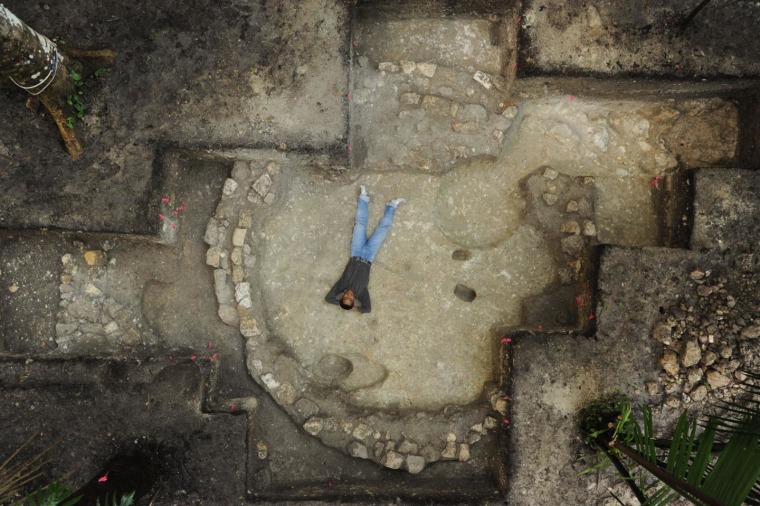Evidence unearthed in the lowlands of Guatemala suggests that hunter-gatherers and the ancient Maya culture's less mobile settlers worked together during a transitional period that lasted for hundreds of years. The findings, published online Monday in the Proceedings of the National Academy of Sciences, challenge the view that mobile and sedentary cultures lived apart, and that public monuments are built only after a culture settles down.
"Our study presents the first relatively concrete evidence that mobile and sedentary people came together to build a ceremonial center," University of Arizona archaeologist Takeshi Inomata said in a news release.
The evidence lies in the layers of ruins at the Ceibal archaeological site in Guatemala: Ceibal's public plaza dates back to about 950 B.C., and by 800 B.C., the Maya were constructing large ceremonial buildings around the plaza. However, there's only scant evidence of permanent dwellings during that period. "There had to be more people working on that construction," Inomata said.
He and his colleagues suggest that the region's hunter-gatherers periodically visited Ceibal to help construct the buildings and participate in community rituals. Working on the buildings "brought diverse groups together," created an ancient melting-pot culture and laid the foundation for Maya civilization, the archaeologists said. The Maya completed the transition to an agrarian society by about 400 B.C. or 300 B.C.
"This tells us something about the importance of ritual and construction," Inomata said. "People tend to think that you have a developed society, and then building comes. I think in many cases it's the other way around."
IN-DEPTH
- Archaeologists Dig Into Maya Culture's Tangled Roots
- Maya Mural in Guatemala Reveals Ancient 'Photobomb'
- Ancient Maya Altars, Artwork Found in Guatemala
SOCIAL
— Alan Boyle
In addition to Inomata, the authors of "Development of Sedentary Communities in the Maya Lowlands: Coexisting Mobile Groups and Public Ceremonies at Ceibal, Guatemala" include Jessica MacLellan, Daniel Triadan, Jessica Munson, Melissa Burham, Kazuo Aoyama, Hiroo Nasu, Flory Pinzon and Hitoshi Yonenobu.
